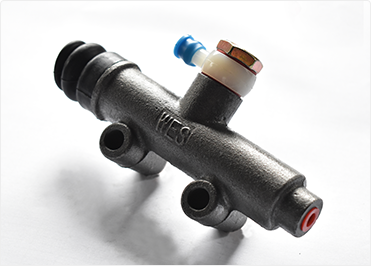Working principle of hydraulic cylinder
The oil cylinder is a hydraulic oil cylinder, which is a linear motion actuator whose output force is proportional to the effective area of the piston the pressure difference between both sides. The hydraulic cylinder is basically composed of a cylinder tube a cylinder head, a piston a piston rod, a sealing device, a buffer device an exhaust device. Its power principle is to convert hydraulic energy into mechanical energy. The actual input of the hydraulic cylinder is calculated by calculating the flow pressure of the fluid, the output energy is calculated by calculating the speed force of the linear motion, plus a little useless power consumption. The piston of the hydraulic oil cylinder can complete the reciprocating periodic movement in a straight line, the periodic displacement of the movement is limited. This element is an energy conversion device that converts hydraulic energy into mechanical energy for reciprocating linear motion.

The oil cylinder is a hydraulic oil cylinder, which is a linear motion actuator whose output force is proportional to the effective area of the piston the pressure difference between both sides. The hydraulic cylinder is basically composed of a cylinder tube a cylinder head, a piston a piston rod, a sealing device, a buffer device an exhaust device. Its power principle is to convert hydraulic energy into mechanical energy. The actual input of the hydraulic cylinder is calculated by calculating the flow pressure of the fluid, the output energy is calculated by calculating the speed force of the linear motion, plus a little useless power consumption. The piston of the hydraulic oil cylinder can complete the reciprocating periodic movement in a straight line, the periodic displacement of the movement is limited. This element is an energy conversion device that converts hydraulic energy into mechanical energy for reciprocating linear motion.


